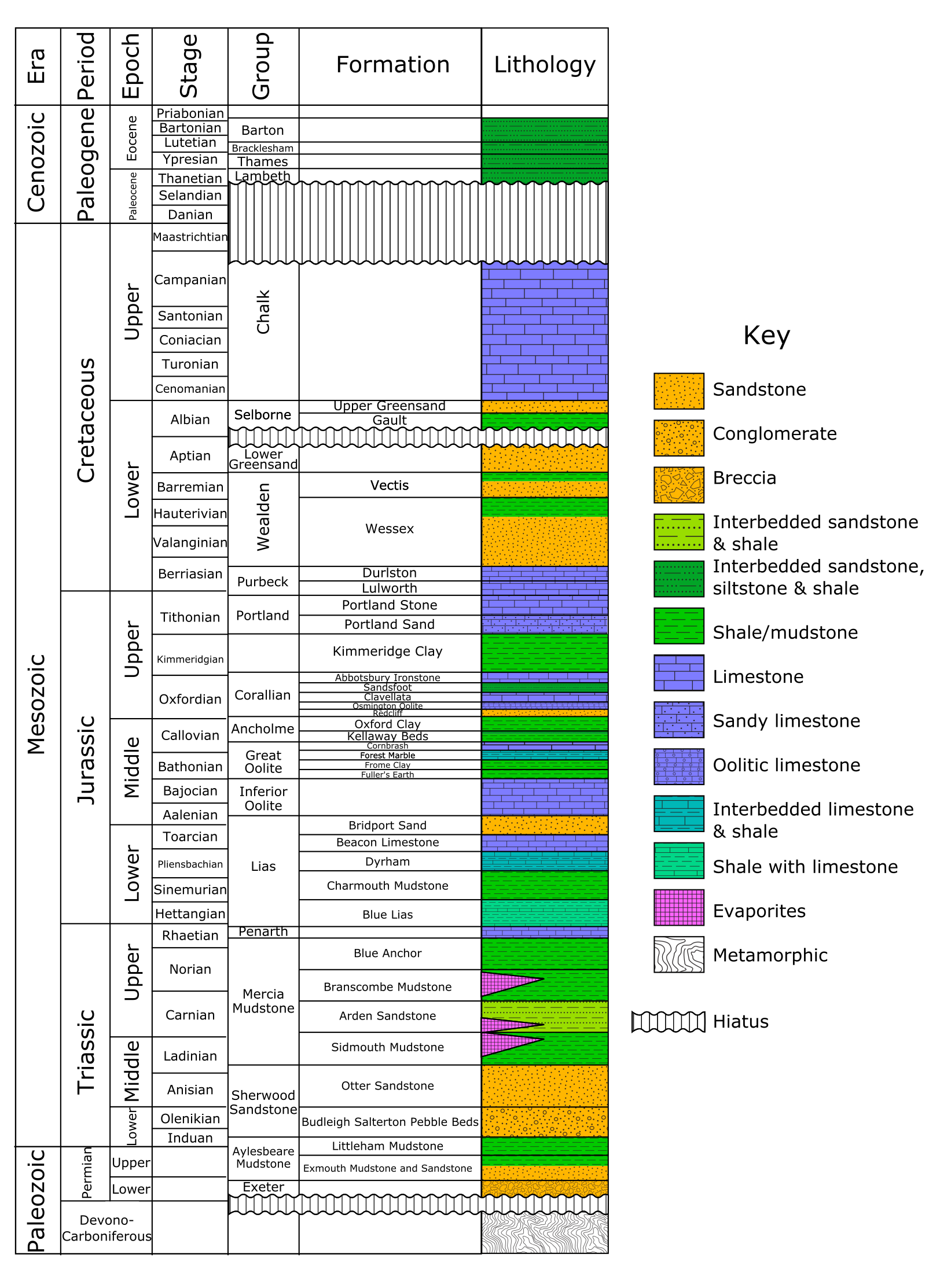|
Dungeyella
''Dungeyella'' is an extinct genus of chironomid midge from the Wealden amber of the Wessex Formation of the Isle of Wight, UK, containing the single species ''D. gavini''. it belongs to the subfamily Buchonomyiinae ''Buchonomyia'' is the only extant genus of the subfamily Buchonomyiinae of the non-biting midge family Chironomidae. There are three known extant species and one fossil species in the genus: Members of the genus are parasitic of psychomyiid ca .... References Chironomidae {{Chironomidae-stub ... [...More Info...] [...Related Items...] OR: [Wikipedia] [Google] [Baidu] |
Wessex Formation
The Wessex Formation is a fossil-rich English geological formation that dates from the Berriasian to Barremian stages (about 145–125 million years ago) of the Early Cretaceous. It forms part of the Wealden Group and underlies the younger Vectis Formation and overlies the Durlston Formation. The dominant lithology of this unit is mudstone with some interbedded sandstones. It is part of the strata of the Wessex Basin, exposed in both the Isle of Purbeck and the Isle of Wight. While the Purbeck sections are largely barren of vertebrate remains, the Isle of Wight sections are well known for producing the richest and most diverse fauna in Early Cretaceous Europe. Nomenclatural History The Wessex Formation has historically alternately been called the "Variegated Marls And Sandstones", a name used by W. J. Arkell in his 1947 map of the Isle of Purbeck as well as the "Wealden Marls" It was given its current formal name by Daley and Stewart in 1979 Stratigraphy and Lithology In ... [...More Info...] [...Related Items...] OR: [Wikipedia] [Google] [Baidu] |
Buchonomyiinae
''Buchonomyia'' is the only extant genus of the subfamily Buchonomyiinae of the non-biting midge family Chironomidae. There are three known extant species and one fossil species in the genus: Members of the genus are parasitic of psychomyiid caddisflies. *'' Buchonomyia thienemanni'' Fittkau, 1955 *'' Buchonomyia burmanica'' Brundin and Sæther, 1978 *'' Buchonomyia brundini'' Andersen and Sæther, 1995 *†'' Buchonomyia succinea'' Seredszus and Wichard 2003 (Eocene, Baltic amber) In addition, two extinct genera belonging to Buchonomyiinae are known: * †'' Dungeyella'' Jarzembowski et al. 2008 (Barremian, Wessex Formation) * †'' Furcobuchonomyia'' Baranov et al. 2017 ( Cenomanian, Burmese amber Burmese amber, also known as Burmite or Kachin amber, is amber from the Hukawng Valley in northern Myanmar. The amber is dated to around 100 million years ago, during the latest Albian to earliest Cenomanian ages of the mid-Cretaceous period. The ...) References Chiron ... [...More Info...] [...Related Items...] OR: [Wikipedia] [Google] [Baidu] |
Barremian
The Barremian is an age in the geologic timescale (or a chronostratigraphic stage) between 129.4 ± 1.5 Ma (million years ago) and 121.4 ± 1.0 Ma). It is a subdivision of the Early Cretaceous Epoch (or Lower Cretaceous Series). It is preceded by the Hauterivian and followed by the Aptian Stage.See Gradstein ''et al.'' (2004) or the online geowhen database (link below) Stratigraphic definitions The original type locality for the Barremian Stage is in the vicinity of the village of Barrême, Alpes-de-Haute-Provence, France. Henri Coquand defined the stage and named it in 1873. The base of the Barremian is determined by the first appearance of the ammonites ''Spitidiscus hugii'' and ''Spitidiscus vandeckii''. The end of the Barremian is determined by the geomagnetic reversal at the start of the M0r chronozone, which is biologically near the first appearance of the ammonite '' Paradeshayesites oglanlensis''. Regional equivalents The Barremian falls in the Gallic epoch, a su ... [...More Info...] [...Related Items...] OR: [Wikipedia] [Google] [Baidu] |
Chironomid
The Chironomidae (informally known as chironomids, nonbiting midges, or lake flies) comprise a family of nematoceran flies with a global distribution. They are closely related to the Ceratopogonidae, Simuliidae, and Thaumaleidae. Many species superficially resemble mosquitoes, but they lack the wing scales and elongated mouthparts of the Culicidae. The name Chironomidae stems from the Ancient Greek word ''kheironómos'', "a pantomimist". Common names and biodiversity This is a large taxon of insects; some estimates of the species numbers suggest well over 10,000 world-wide. Males are easily recognized by their plumose antennae. Adults are known by a variety of vague and inconsistent common names, largely by confusion with other insects. For example, chironomids are known as "lake flies" in parts of Canada and Lake Winnebago, Wisconsin, but "bay flies" in the areas near the bay of Green Bay, Wisconsin. They are called "sand flies", "muckleheads", "muffleheads", "Canadian so ... [...More Info...] [...Related Items...] OR: [Wikipedia] [Google] [Baidu] |
Isle Of Wight
The Isle of Wight ( ) is a county in the English Channel, off the coast of Hampshire, from which it is separated by the Solent. It is the largest and second-most populous island of England. Referred to as 'The Island' by residents, the Isle of Wight has resorts that have been popular holiday destinations since Victorian times. It is known for its mild climate, coastal scenery, and verdant landscape of fields, downland and chines. The island is historically part of Hampshire, and is designated a UNESCO Biosphere Reserve. The island has been home to the poets Algernon Charles Swinburne and Alfred, Lord Tennyson. Queen Victoria built her summer residence and final home, Osborne House at East Cowes, on the Isle. It has a maritime and industrial tradition of boat-building, sail-making, the manufacture of flying boats, hovercraft, and Britain's space rockets. The island hosts annual music festivals, including the Isle of Wight Festival, which in 1970 was the largest rock music ... [...More Info...] [...Related Items...] OR: [Wikipedia] [Google] [Baidu] |


